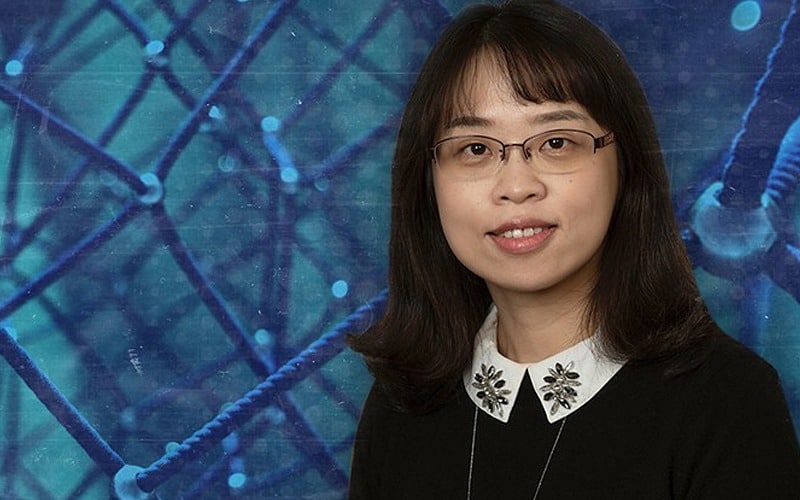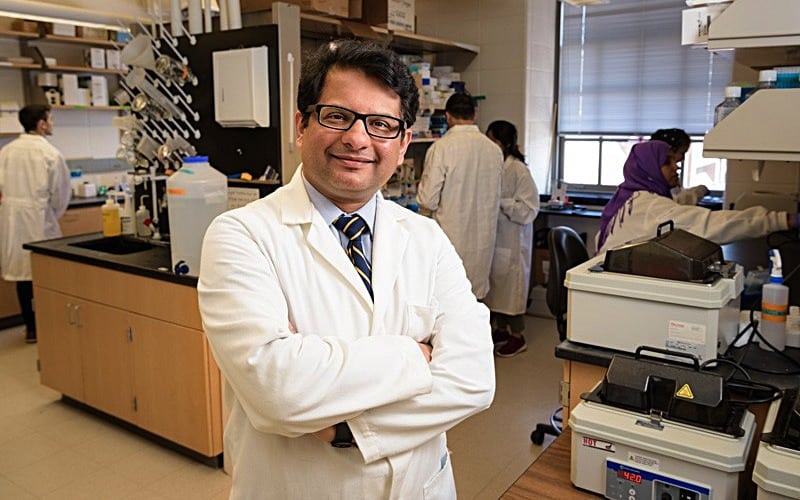 Research & Discovery
Research & Discovery
A Blog Devoted to UD Innovation, Excellence and Scholarship
Research & Discovery
A Blog Devoted to UD Innovation, Excellence and Scholarship
Neural networks
ABOVE: Associate Professor of Electrical and Computer Engineering Chengmo Yang is researching ways to support neural networks in low-power embedded systems in items such as smartphones by using emerging memory devices that can retrieve information even when powered off, and furthermore minimize errors in these emerging devices. | Photo illustration by Joy Smoker and Chengmo Yan
UD research could expand the use of artificial intelligence on internet-of-things hardware
If you have a smart phone with facial recognition, you may have wondered: How does your device learn to recognize your face as opposed to, say, your spouse’s face?
Credit a neural network, a form of artificial intelligence increasingly used in everyday devices. Neural networks are algorithms trained to recognize patterns and continuously improve their ability to do so — just as the human brain does.
In order to be so smart, neural networks require a lot of power, which so far has limited their usefulness in small, battery-powered devices. Have you ever wondered why your smartphone supports face ID but your smartwatch does not? Simply because the watch does not have sufficient power to support it. With a new grant from the National Science Foundation (NSF), University of Delaware Associate Professor of Electrical and Computer Engineering Chengmo Yang is researching ways to support neural networks in low-power embedded systems by using emerging memory devices that can retrieve information even when powered off, and furthermore minimize errors in these emerging devices.





